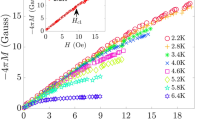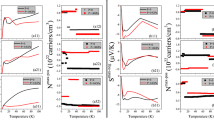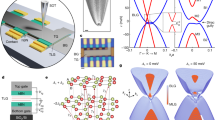Abstract
EXPERIMENTS by one of us1 on the de Haas–van Alphen effect in gallium, tin and graphite (periodic field-dependence of magnetic susceptibility of metal single crystals) have now been extended to higher fields (up to 15,800 gauss), to lower temperatures (down to 1.1° K.), and to other metals; at the same time the theory of the effect has been reconsidered. The present note gives a brief account of the new results.
This is a preview of subscription content, access via your institution
Access options
Subscribe to this journal
Receive 51 print issues and online access
$199.00 per year
only $3.90 per issue
Buy this article
- Purchase on SpringerLink
- Instant access to full article PDF
Prices may be subject to local taxes which are calculated during checkout
Similar content being viewed by others
References
Shoenberg, Nature, 164, 225 (1949).
Verkin, Lazarev and Rudenko, J. Exp. Theor. Phys. U.S.S.R., 20, 93 (1950).
See appendix to Shoenberg, Proc. Roy. Soc., A, 170, 341 (1939).
Shoenberg and Zaki Uddin, Proc. Roy. Soc., A, 156, 701 (1936). Marcus, J., Phys. Rev., 77, 750 (1950).
Hulm, Proc. Roy. Soc., A (in the press).
Pippard, Physica, 15, 45 (1949).
Andrew, Proc. Phys. Soc., A, 62, 77 (1949).
Goodman (private communication of preliminary results).
Mackinnon, Proc. Phys. Soc., B, 62, 170 (1949).
Author information
Authors and Affiliations
Rights and permissions
About this article
Cite this article
DINGLE, R., SHOENBERG, D. The de Haas-van Alphen Effect. Nature 166, 652–653 (1950). https://doi.org/10.1038/166652b0
Issue date:
DOI: https://doi.org/10.1038/166652b0
This article is cited by
-
De Haas – van Alphen Effect in Aluminium and Antimony
Nature (1951)



